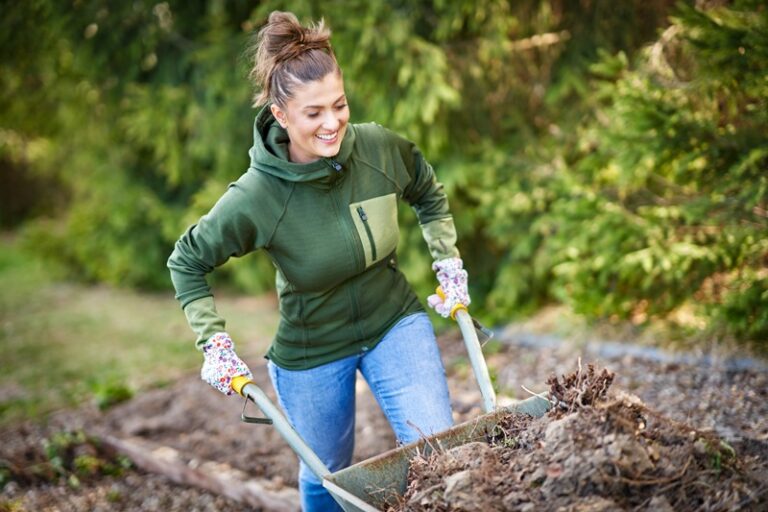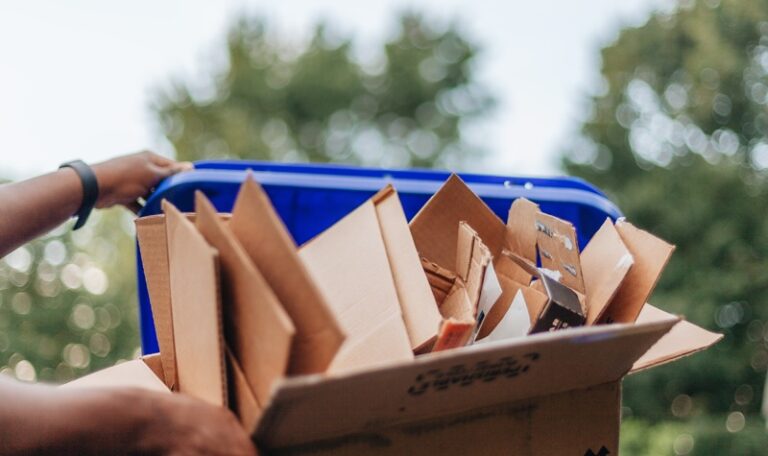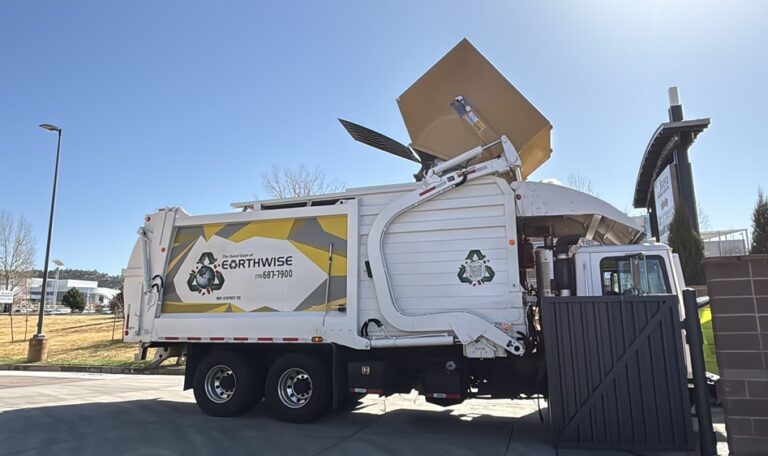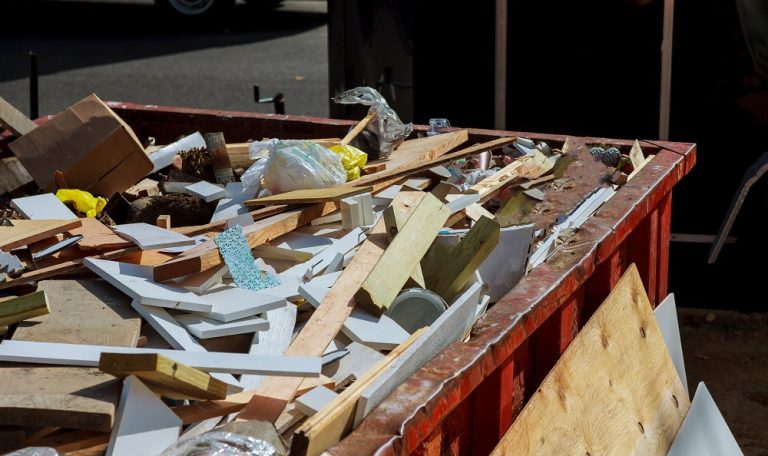Composting is one of the simplest and most effective ways to reduce household waste and create something valuable in return. Instead of sending organic scraps to the landfill, composting transforms them into nutrient-rich soil that helps gardens, plants, and lawns thrive. Whether you’re a homeowner looking to live more sustainably or a business interested in greener waste practices, learning how to compost is a step in the right direction.
This guide covers everything you need to know about composting, from the basic science behind it to the practical steps for starting at home or work.
What Is Composting?
Composting is the natural process of breaking down organic materials such as food scraps, yard trimmings, and paper products into a rich, soil-like substance called compost. Microorganisms like bacteria and fungi, along with worms and insects, decompose the materials in a controlled environment, producing a nutrient-dense amendment that can be added to soil.
The process mimics what happens in nature when leaves, plants, and food waste decay on the forest floor. By creating a compost system, you simply speed up and control that process so it happens efficiently and cleanly at home, in your garden, or within a community program.
Why Composting Matters
Composting does far more than reduce the amount of waste that ends up in landfills. It is one of the most powerful tools individuals and communities have to support a healthier planet.
1. Reduces Landfill Waste
Nearly 30 percent of household waste consists of organic materials that could be composted. When food and yard waste end up in landfills, they decompose without oxygen, producing methane, a potent greenhouse gas. Composting diverts that waste, reducing emissions and the strain on local waste systems.
2. Improves Soil Health
Compost adds essential nutrients and organic matter back into the soil, improving its structure, water retention, and fertility. Healthy soil grows stronger plants and reduces the need for chemical fertilizers.
3. Supports Local Ecosystems
Using compost supports pollinators, microorganisms, and plant life that help sustain local ecosystems. It also reduces runoff and erosion, keeping nearby waterways cleaner.
4. Saves Money
Composting can cut down on disposal costs, especially for households that pay based on bin size or weight. It also saves money on fertilizers and soil conditioners for gardens and landscaping.
5. Encourages Sustainability
Composting helps individuals move toward zero waste. It is a simple and effective way to take responsibility for what we throw away and close the loop on resource use.
The Science Behind Composting
At its core, composting is all about creating the right conditions for microorganisms to thrive. These tiny decomposers need four key ingredients to do their work:
- Carbon (Browns): Materials like dry leaves, straw, paper, and cardboard provide energy for microbes.
- Nitrogen (Greens): Food scraps, coffee grounds, and grass clippings supply protein for microbial growth.
- Oxygen: Microorganisms need oxygen to break down materials aerobically (with air), preventing foul odors.
- Moisture: Water helps maintain microbial activity, but too much can create airless conditions.
The balance of these elements determines how quickly and effectively your compost pile breaks down. The goal is to maintain a roughly two-to-one ratio of browns to greens, with enough moisture to feel like a damp sponge.
What You Can and Cannot Compost
Knowing what belongs in your compost bin is essential for keeping your system healthy and odor-free.
Compostable Materials (The “Yes” List)
- Fruit and vegetable scraps
- Coffee grounds and filters
- Tea bags (without plastic)
- Eggshells
- Yard trimmings and leaves
- Grass clippings
- Shredded paper and cardboard
- Wood chips and sawdust (untreated)
- Houseplant trimmings
- Hair and pet fur
Avoid These Materials (The “No” List)
- Meat, fish, and bones
- Dairy products and fats
- Oily foods or grease
- Diseased plants
- Pet waste (dog or cat feces)
- Plastics, glass, or metals
- Chemically treated wood or paper
Keeping non-compostable items out ensures that your compost remains clean, safe, and suitable for gardens or landscaping.
Types of Composting Systems
There is no one-size-fits-all method for composting. The right system depends on your available space, time, and goals. Here are some of the most common options.
1. Backyard Composting
Perfect for homeowners, backyard composting involves collecting food and yard waste in a bin or open pile. The key is layering browns and greens, turning the pile every few weeks to aerate it, and keeping it moist.
2. Tumbler Composting
Compost tumblers are enclosed bins that rotate easily. They make it simple to aerate and speed up decomposition. Tumblers are great for smaller households or urban spaces because they keep pests out and maintain a tidy appearance.
3. Vermicomposting
This method uses red worms to break down food waste quickly. Worm bins are small enough for indoor use, making them ideal for apartments or offices. The resulting worm castings are incredibly nutrient-rich.
4. Bokashi Composting
Bokashi is a Japanese method that ferments food waste with the help of a microbial bran. It is especially useful for composting items like meat and dairy, which traditional methods cannot handle.
5. Community or Municipal Composting
Many cities now operate drop-off programs or collection sites for compostable waste. These large-scale systems can process materials that home setups cannot, such as compostable packaging or paper-based food containers. Check with your local government or sustainability organizations to see what programs are available in your area.
Step-by-Step: How to Start Composting at Home
Getting started with composting is easier than most people think. Here’s a simple step-by-step guide.
1. Choose Your Location
Select a dry, shady area near a water source. If possible, choose a spot with good drainage and airflow.
2. Select a Bin or Pile Type
Decide whether you’ll use a compost bin, tumbler, or open pile. If you’re worried about pests or appearance, an enclosed bin is best.
3. Gather Materials
Collect brown and green materials separately so you can maintain a good balance. Shredding or chopping materials into smaller pieces helps them decompose faster.
4. Layer the Compost
Start with a layer of browns like dry leaves, then add greens such as food scraps. Alternate layers until your bin is about half full.
5. Add Water
Lightly moisten each layer as you go. The compost should be damp but not soggy.
6. Turn the Pile
Every week or two, use a pitchfork or shovel to mix the materials. This aerates the pile and ensures even decomposition.
7. Monitor and Maintain
Watch the moisture level and adjust as needed. Add more browns if the pile is too wet or smells, and add greens if it’s too dry or inactive.
8. Harvest the Compost
After several months, the compost will turn dark, crumbly, and earthy-smelling. Sift out large pieces that haven’t broken down and use the finished compost in your garden or landscaping.
Composting in Apartments and Urban Spaces
Not everyone has a backyard, but that doesn’t mean composting is off the table. Urban dwellers can use smaller, odor-free methods that fit easily into indoor spaces or patios.
Worm Bins (Vermicomposting)
Worm bins take up minimal space and can handle kitchen scraps efficiently. They’re odorless when maintained correctly and produce high-quality compost for houseplants and balcony gardens.
Bokashi Bins
Bokashi bins can be stored under sinks or in closets. After fermentation, the material can be buried outdoors or added to a community compost program.
Community Composting
If your city has a compost drop-off program, participating is an easy way to keep food waste out of the landfill without maintaining your own pile.
Composting for Businesses
Composting isn’t just for homeowners. Restaurants, offices, and other organizations can implement composting programs to reduce waste and promote sustainability.
Benefits for Businesses
- Reduced Disposal Costs: Diverting organic materials from landfills can lower hauling expenses.
- Positive Brand Image: Customers appreciate businesses that care about the environment.
- Compliance: Some municipalities require organic waste diversion.
- Sustainable Culture: Composting fosters environmental awareness among employees.
Businesses can start by conducting a waste audit, setting up labeled bins for food scraps, and connecting with local composting programs or commercial processors that accept organics.
Troubleshooting Common Composting Problems
Even with the best setup, composting can occasionally hit a few bumps. Here are some common issues and how to fix them.
| Problem | Possible Cause | Solution |
| Foul odor | Too many greens or not enough air | Add browns and turn the pile |
| Pile too dry | Lack of moisture | Add water or fresh greens |
| Pile not heating up | Too small or unbalanced | Add greens and turn regularly |
| Attracting pests | Food scraps exposed | Cover with leaves or soil and use enclosed bins |
| Mold or fungus | Normal in small amounts | Mix materials and improve airflow if excessive |
How Long Does Composting Take?
The time it takes to produce compost depends on your method and conditions.
- Active composting: 2–4 months when turned regularly and balanced well
- Passive composting: 6–12 months with minimal effort
- Vermicomposting: 1–3 months depending on worm activity and temperature
Temperature, aeration, and material balance all play a role in how fast your compost matures. The process is faster in warmer weather and with frequent turning.
Using Your Finished Compost
Once your compost is ready, there are countless ways to use it.
In Gardens
Mix compost into garden beds to improve nutrient levels and soil structure. It’s especially helpful for Colorado’s dry, clay-heavy soils, as it boosts water retention and plant resilience.
On Lawns
Sprinkle a thin layer of compost across your lawn in early spring or fall. It enriches the soil and encourages healthier grass growth.
For Houseplants
Blend compost into potting soil to create a nutrient-rich medium that supports root development and moisture control.
Landscaping and Trees
Add compost around trees and shrubs to encourage strong root systems and natural pest resistance.
Erosion Control
Compost can help stabilize soil on slopes or newly planted areas, reducing erosion from rain or wind.
Composting and Colorado’s Climate
Composting in Colorado presents unique opportunities and challenges due to the region’s dry climate and wide temperature swings.
Tips for Colorado Composting
- Add Extra Moisture: The arid air can dry out compost quickly. Regularly water your pile to maintain dampness.
- Insulate in Winter: Use straw bales, wood chips, or tarps to keep the pile warm in colder months.
- Use Local Browns: Pine needles, dry leaves, and straw are excellent carbon sources commonly available in Colorado.
- Secure Your Setup: Protect compost bins or piles from wind to prevent materials from blowing away.
- Keep It Covered: Enclosed bins or lids help deter wildlife.
Composting Myths Debunked
Myth 1: Composting Smells Bad
Properly balanced compost should smell earthy, not rotten. Odors only occur when there’s too much moisture or nitrogen and not enough air.
Myth 2: Composting Attracts Pests
Enclosed bins or covered piles keep animals out. Burying food scraps beneath a layer of browns also helps.
Myth 3: Composting Takes Too Much Time
Once set up, composting requires minimal effort. Regularly adding scraps and turning the pile is all it takes to keep it going.
Myth 4: You Need a Big Yard
Small-scale systems like worm bins or bokashi make composting possible anywhere, even in apartments.
Myth 5: You Can Compost Anything Organic
Not everything organic is safe to compost. Meat, dairy, and oily foods can cause odors and attract pests, so it’s best to keep them out unless you use a specialized method.
Composting and Recycling: The Perfect Pair
Composting and recycling go hand in hand. While composting takes care of organic waste, recycling focuses on materials like paper, plastic, glass, and metal. Together, they drastically reduce the volume of waste sent to landfills and contribute to a cleaner, more sustainable community.
Even if composting is handled at home or through a community program, recycling through a provider like Earthwise Waste Solutions ensures that the rest of your waste stream is managed responsibly. By sorting recyclables, compostables, and true trash separately, you can make a measurable impact on the environment and reduce what ends up in landfills.
Key Takeaways
- Composting turns organic waste into valuable soil nutrients.
- It reduces landfill waste and greenhouse gas emissions.
- A balanced mix of browns and greens is essential for success.
- Anyone can compost, from homeowners with large yards to apartment dwellers.
- Composting and recycling together create the most sustainable waste solution.
Do Your Part With Earthwise Waste Solutions
At Earthwise Waste Solutions, we’re proud to help communities in Southern Colorado reduce landfill waste through reliable trash and recycling services. Composting at home or through local programs is an excellent way to complement those efforts. Together, these actions create cleaner neighborhoods, healthier soil, and a more sustainable future.
If you’re ready to make your waste habits more eco-friendly, Earthwise Waste Solutions is here to help with dependable collection and recycling services across Colorado Springs, Teller County, and Pueblo.
Learn more about how to recycle right and reduce your household waste footprint with Earthwise Waste Solutions.



